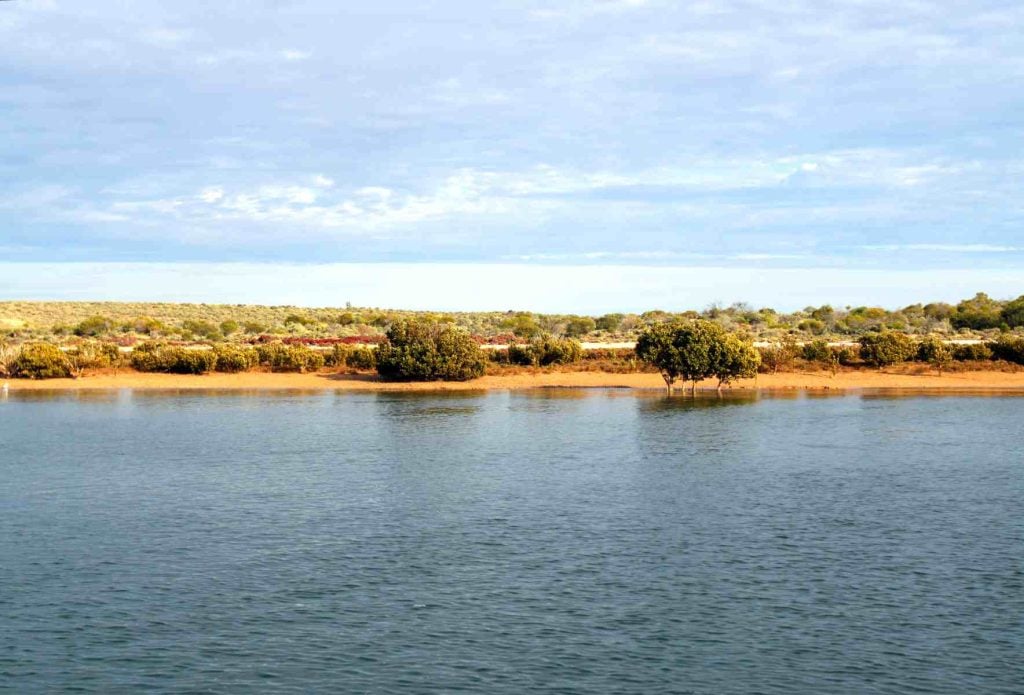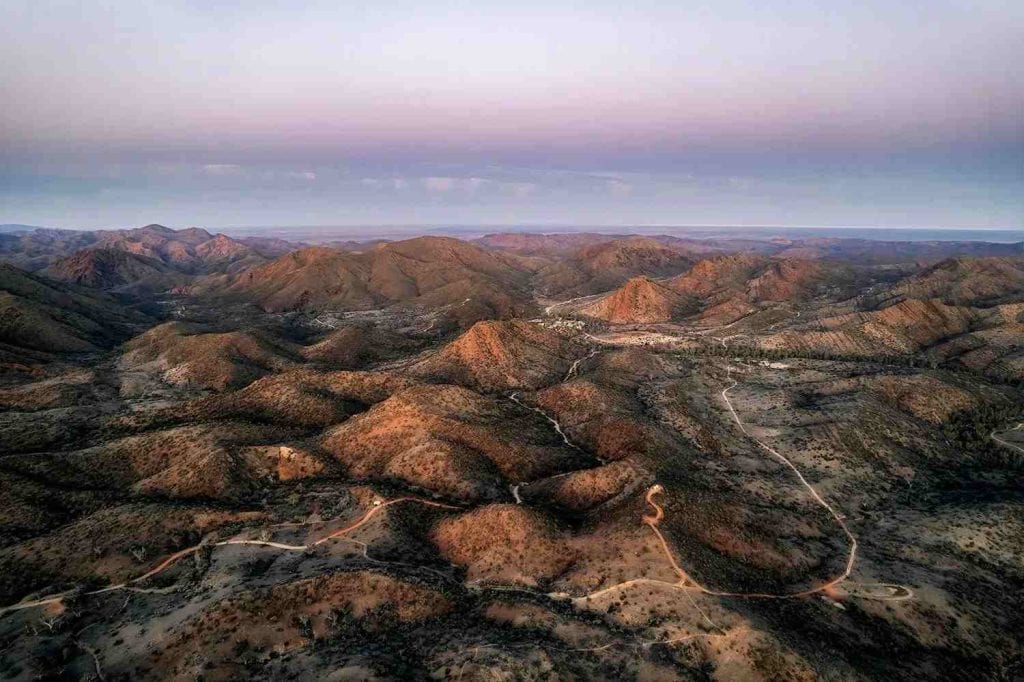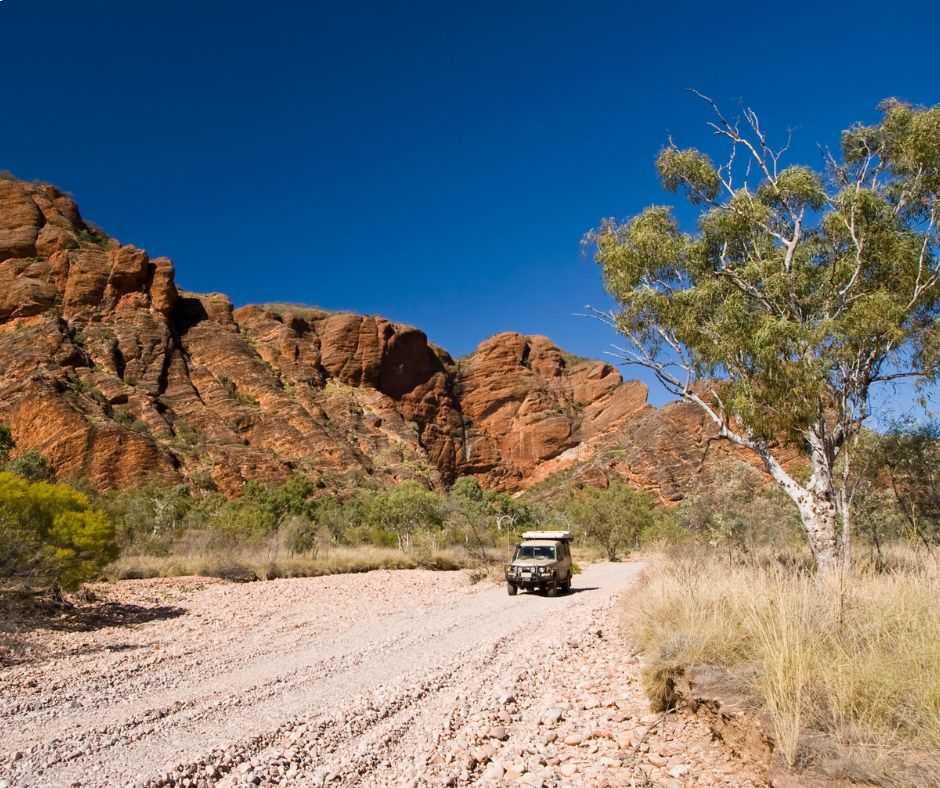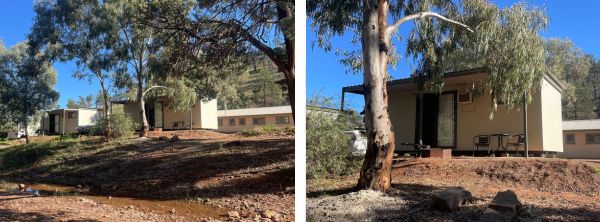Planning a scenic drive through South Australia’s Outback is more than plotting a line on a map.
The long, dusty highways can surprise even seasoned travellers — with enormous distances, spotty phone reception, and fuel stops that seem to disappear when you need them most.
This guide reveals the tips that turn a daunting Outback drive into an adventure worth pursuing, from knowing where to refuel and when to travel to discovering sights that aren’t in the brochures.
It’s packed with practical advice to help make every kilometre count, and every stop a highlight.
Tips for Scenic Drives in South Australia’s Outback

A scenic drive through South Australia’s Outback requires some planning to ensure it is both safe and enjoyable.
The long, remote roads have limited fuel stops, so map your route and mark where to refuel.
Travel between April and October when temperatures are cooler, and the tracks are more reliable.
Always carry plenty of water, snacks and a first‑aid kit — at least four litres of water per person per day.
Stop every couple of hours to rest and watch for wildlife, especially at dawn and dusk when kangaroos are active.
Respect the land by sticking to marked tracks, seeking permission before entering Aboriginal areas and taking all rubbish with you.
A little preparation goes a long way, making the Outback drive a memorable adventure.
Discovering South Australia’s Outback by Road
South Australia’s Outback is built for long, rewarding drives.
The open highways cut through the red desert, past tiny historic towns and striking natural landmarks that seem to appear out of nowhere.
It’s a place where the journey itself becomes the adventure, with every stretch of road offering a sense of space and quiet you won’t find elsewhere.
With proper planning and a bit of respect for the land, these drives open up a side of Australia that’s worth exploring at a leisurely pace.
It’s about more than getting from one point to another — it’s a chance to experience the Outback at its best.
1. Oodnadatta Track
The Oodnadatta Track winds through desert country, evoking a sense of stepping back in time.
The well-graded gravel route — roughly 617 km from Marree to Marla — follows an ancient Aboriginal trading path lined with historic stone rail cottages like Wangianna.
It’s called an “easy 4WD” track, and in dry conditions, a sturdy 2WD can make it.
Just be wary of renting, as most hire cars aren’t insured for off‑road travel. Each stop is approximately 200 km apart.
The main stops — Marree, William Creek, Oodnadatta, and Marla — offer basic accommodation and a pub or campground, making it ideal to take 2–3 days and break up the drive.
Always carry at least 4–5 litres of water per person per day, plus extra fuel. Avoid travelling in summer when temperatures can top 45 °C and shade is almost nonexistent.
Heavy rains can bog even a 4WD, so always check the SA Government Outback Road Warnings before you leave.
The track is packed with sights worth stopping for. At Coward Springs, an old railway siding has been turned into a hot‑tub oasis.
The Mound Springs at Strangways are historic Aboriginal water sources. Algebuckina Bridge — the longest of the old Ghan railway — still stands tall across the floodplain, and nearby ruins of old railway sidings hint at the area’s heritage.
A detour down Borefield Road leads to the Painted Desert and Arckaringa Hills, best viewed in the late afternoon when the colours come alive.
It’s a remote drive, but one that delivers a sense of space, history and quiet beauty like nowhere else.
2. Flinders Ranges Circuit
The Flinders Ranges span over 430 km and are packed with sights worth seeing.
The best way to explore is a loop from Port Augusta or via Quorn and Hawker.
At its heart is Wilpena (Ikara) Pound, a vast natural amphitheatre that’s sacred to the Adnyamathanha people. It’s worth taking a walk or going on a scenic flight to take it in.
Most sights, like Brachina Gorge with its 600‑million‑year‑old rock layers and rare Yellow‑footed Rock‑wallabies, can be reached by sealed roads.
Remote spots, such as Arkaroola, with its Ridgetop Tour and status as an International Dark Sky Sanctuary, require a 4WD vehicle.
Near Wilpena, Sacred Canyon and Arkaroo Rock feature ancient Aboriginal carvings that are best explored with a guide.
At Nilpena (Ediacara), fossil fields reveal a world before dinosaurs, and the Prairie Hotel in Parachilna serves up iconic Outback meals like camel and kangaroo.
The best time to visit is from April to September when temperatures remain mild.
Main stops, such as Port Augusta, Quorn, Hawker, Leigh Creek, and Copley, have fuel and supplies. It’s a remote drive worth every kilometre.
3. Stuart Highway (SA Section)
The Stuart Highway is the main route from Port Augusta to the SA/NT border, a sealed stretch of about 1,200 km that’s ideal for first‑timers.
A 2WD is fine, but planning is vital — especially between Glendambo and Coober Pedy, where it’s 265 km with no services.
Always top up fuel and water before leaving Glendambo, and try to avoid driving after dark when kangaroos and road trains are a risk.
Highlights along the way include Port Augusta, the “Crossroads of the Outback” with its Wadlata Outback Centre, the tiny Woomera range, and Coober Pedy, famous for its underground homes and opals.
Just north of Coober Pedy, the Breakaways reveal colourful mesas and salt plains best seen at sunrise or sunset.
At Cadney Park, the old rail museum recalls the days of the Ghan, and across the NT border, Eagle’s Nest roadhouse is worth a stop.
The best months to drive are April to November when temperatures are mild and nights aren’t too cold.
Must‑See Stops and Hidden Wonders of the Outback

South Australia’s Outback is more than long stretches of road — it’s a place where every stop tells a story.
From ancient fossil fields and sacred gorges to remote springs and heritage railways, the sights here connect deep history with the harsh beauty of the land.
These spots aren’t just sights to tick off; they’re moments worth slowing down for, reminding you why the Outback is worth every kilometre.
- Coward Springs (Oodnadatta Track): A historic Ghan siding with a warm artesian spring — ideal for a break and a photo.
- Strangways Springs: A vital water source for Aboriginal people and early explorers, a quiet reminder of life in a harsh landscape.
- Nilpena fossil fields (Flinders): Some of the oldest animal fossils on earth, best explored with a guide for a closer look at this prehistoric site.
- Wilpena (Ikara) Pound (Flinders): A giant natural amphitheatre sacred to the Adnyamathanha people — great for walks, scenic flights and cultural insights.
- Brachina Gorge (Flinders): Stunning rock layers that tell a 600‑million‑year story and a chance to spot rare Yellow‑footed Rock‑wallabies.
- Sacred Canyon & Arkaroo Rock (Flinders): Ancient carvings and stories of the land, best discovered on a guided walk with an Adnyamathanha guide.
- Arkaroola Wilderness: Rugged peaks and a famous 4WD ridgetop track with panoramic views, plus some of the best stargazing skies in the country.
- Prairie Hotel, Parachilna: An Outback icon serving its famous “feral platter” of camel, kangaroo and goat.
- Breakaways (Stuart Highway): A desert moonscape of colourful mesas and saltbush plains, best viewed from the nearby lookout.
- Wadlata Outback Centre (Port Augusta): An excellent introduction to the region’s heritage and natural history before hitting the open road.
Road and Weather Tips for a Smooth Outback Trip
The best time to drive the Outback is from April to November when temperatures remain mild.
Summer can hit 38 °C or more, and heavy rains can flood crossings and close sections of the Stuart Highway.
Always check the BOM site and SA Outback Road Warnings (1300 361 033) before setting out, and avoid driving at night when kangaroos and other wildlife are active.
Sealed highways are in good shape, but expect corrugations and dust on unsealed tracks.
These are fine when dry but can be impassable after rain. Always leave gates as you find them when crossing cattle stations.
Main tourist routes don’t require permits, but places such as Wabma Kadarbu, Kati Thanda–Lake Eyre, and the APY Lands do.
Book national park camping early — many spots now require online reservations up to a year ahead.
What to Pack and How to Prep for an Outback Drive
A reliable 4WD or AWD vehicle is best suited for the Outback, but a well-maintained 2WD can handle sealed highways with ease.
Always check tyres, brakes and belts before you leave, and carry at least one full‑size spare.

Fill up every chance you get — many roadhouses have limited hours — and carry an extra 20–40 litres of fuel, plus 4–5 litres of water per person per day.
Pack a first-aid kit, recovery gear, tools, a torch, a UHF radio, and paper maps — mobile service is patchy, and offline navigation is vital.
Wear sun‑protective clothing and a hat for hot days, and add warm layers for cold nights.
Insect repellent, sturdy boots and toilet paper are essentials.
Drive to the conditions, watch for wildlife at dawn and dusk, and give road trains plenty of space to manoeuvre.
Never cross flooded tracks and respect gates — leave them as you found them. The Outback is worth every kilometre when you’re well prepared.
Where to Stay in the Outback

The Outback has accommodations for every style of traveller.
From roadhouse caravan spots with hot showers to quiet bush camps under a vast sky, it’s worth planning to make the most of the trip. Here’s a quick look at the best options for a night’s rest:
- Roadhouses & Caravan Parks: Most roadhouses north of Port Augusta have powered caravan sites, hot showers, pubs and meals. Try Glendambo, Cadney Park, Marla Travellers Rest or Kulgera. Port Augusta, Coober Pedy and Erldunda have full‑service parks — book ahead in peak season.
- Outback Stations: Stay closer to the land at places like Rawnsley Park (Flinders Ranges), Arkaroola Wilderness Sanctuary or Anna Creek Station (with a permit). The Prairie Hotel also has rooms and a campground for those chasing a taste of outback life.
- National Park Campgrounds: Ikara-Flinders Ranges (Wilpena Pound), Mount Remarkable (Alligator Gorge), and Kati Thanda–Lake Eyre offer low-cost or free campgrounds. Check the SA Parks website for permit details and Desert Parks Pass information before you go.
- Free Camping: Simple, quiet spots can be found near Erldunda and Stuarts Well. Cadney Park also has an unpowered area just outside the leading site. These spots have few or no facilities, so camp well off the road and use toilets sparingly.
FAQs Scenic Drives in South Australia’s Outback
Do I Need A 4WD For Scenic Drives In South Australia’s Outback?
Not always. Most of the main highways and popular tourist routes are sealed and fine for a 2WD, making them ideal for first‑timers.
However, a 4WD is worth considering if tackling unsealed tracks, remote national parks or more rugged areas like Arkaroola, where clearance and grip matter.
When Is The Best Time To Visit The Outback?
The best time to visit the Outback is between April and September, when temperatures are mild and skies are clear.
These cooler months make long drives, hikes and camping far more comfortable.
Summer can be brutally hot, often exceeding 38 °C, and heavy rains can flood roads.
Travelling in the cooler season ensures a safer, more enjoyable experience.
How Much Fuel And Water Should Travellers Carry?
Travellers often ask how much fuel and water they should carry for Outback drives, and it’s worth planning for long stretches between stops.
Always fill up when you can and carry an extra 20–40 litres of fuel as a safety buffer.
For water, at least 4–5 litres per person per day is essential in this harsh, remote country.
Are Permits Required For Certain Areas?
Yes, permits are required for certain areas of South Australia’s Outback.
Most main tourist routes don’t need one, but a Desert Parks Pass is required for places like Kati Thanda–Lake Eyre or Wabma Kadarbu.
Travel to the APY Lands also needs a special permit, so it’s worth checking before you go.
Is Mobile Phone Coverage Available?
Mobile phone coverage in South Australia’s Outback is very limited, especially away from major highways and towns.
Travellers should expect long stretches with no signal, making offline maps, GPS and a satellite phone or Personal Locator Beacon vital for safety.
Always download maps before leaving and consider a UHF radio for remote areas.
Is It Safe To Drive At Night?
It’s generally not safe to drive at night in the Outback. Kangaroos, cattle and other wildlife often wander onto the roads, making collisions a serious risk.
The long, dark stretches also cause fatigue. It’s best to drive during daylight hours when visibility is clear and rest overnight.
What Should Travellers Pack For An Outback Trip?
For an Outback trip, travellers need to pack smart.
A first‑aid kit, recovery gear, spare tyres, sun‑protective clothing, warm layers, a torch, a UHF radio or satellite phone, and enough water and food for long stretches are all essentials.
Are Guided Tours Available?
Yes, guided tours are available in South Australia’s Outback, and they’re ideal for seeing sights with a local expert.
From Aboriginal‑led walks at Sacred Canyon and Arkaroo Rock, to fossil tours at Nilpena and 4WD trips through Arkaroola, these tours make it easy to learn about the land, wildlife and culture while exploring safely.
Do I Need To Book National Park Camping?
Yes, national park camping in South Australia’s Outback needs to be booked in advance.
Many popular spots, like Wilpena Pound and Alligator Gorge, require online reservations, sometimes up to 12 months ahead.
A Desert Parks Pass is also required for camping in certain areas, so it’s worth planning early to secure a site.
Final Thoughts: Scenic Drive Tips In South Australia’s Outback
A scenic drive through South Australia’s Outback is about more than getting from one place to another.
It’s a chance to slow down, soak up the space and connect with a side of Australia that only reveals itself to those who make the journey.
By planning, packing well and knowing where to refuel, rest and explore, the long stretches of highway and remote tracks become part of the adventure.
Mark a route, pick a time and hit the road — the Outback is worth every kilometre for those ready to experience its quiet beauty and rich heritage.